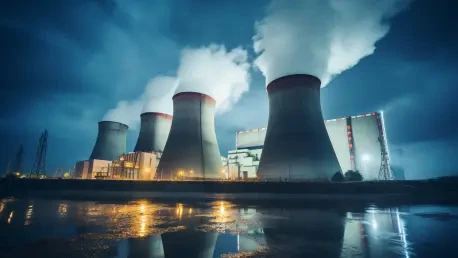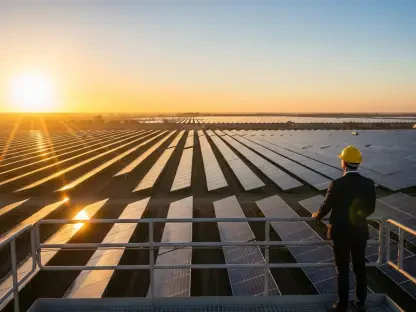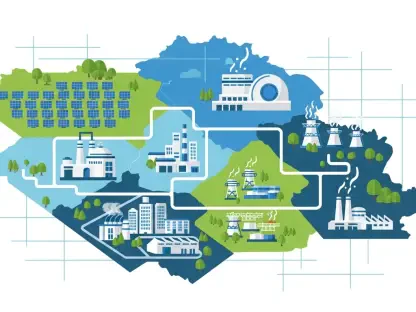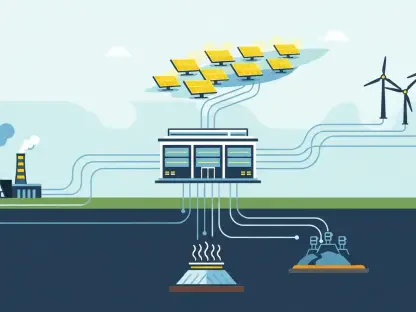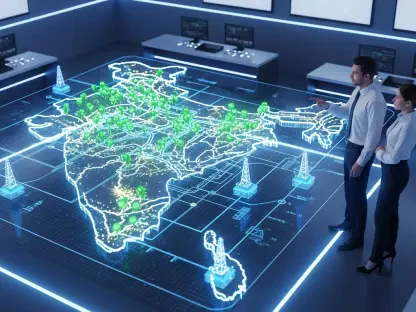Setting the Stage for a Nuclear Resurgence
Imagine a world where clean, reliable energy powers the insatiable demands of data centers and artificial intelligence without adding to the carbon footprint, a vision now becoming reality in Michigan. The U.S. government has injected significant financial support to restart the Palisades nuclear plant, an 800-megawatt facility shuttered in 2022. Operated by Holtec International, this project could mark a historic first—the revival of a decommissioned nuclear reactor in the U.S. With over $83 million already disbursed from a potential $1.52 billion loan guarantee by the Department of Energy (DOE), this initiative highlights nuclear power’s critical role in meeting escalating energy needs.
The importance of this development extends beyond a single plant. It signals a potential turning point for the nuclear energy market, long plagued by public skepticism and economic challenges. This analysis aims to dissect the market dynamics surrounding the Palisades restart, exploring current trends, financial commitments, and future projections for the industry. By delving into these elements, a clearer picture emerges of how nuclear power might reclaim its position as a cornerstone of America’s clean energy strategy.
Unpacking Market Trends and Projections in Nuclear Energy
Financial Backing as a Market Catalyst
The substantial federal funding for the Palisades restart underscores a pivotal shift in the nuclear energy market. The DOE’s loan guarantee program, which has already allocated over $83 million with a ceiling of $1.52 billion, reflects a robust commitment to revitalizing dormant infrastructure. This financial support is not merely a lifeline for one plant but a signal to investors and energy companies that nuclear power is a viable sector for growth. Market analysts note that such government backing reduces financial risk, encouraging private entities to explore similar restart projects amid rising electricity costs and demand.
Unlike previous decades when nuclear projects struggled with funding due to high upfront costs, the current landscape shows a convergence of public and private interests. The economic ripple effects are significant, with potential job creation and local economic boosts in Michigan. As funding mechanisms like these expand, they could catalyze a broader wave of investment, potentially transforming the market from a stagnant sector into a vibrant hub of clean energy innovation over the next few years.
Regulatory Environment Shaping Industry Pace
Regulatory frameworks play a defining role in the nuclear energy market’s trajectory, often acting as both a safeguard and a bottleneck. For the Palisades project, the Nuclear Regulatory Commission (NRC) has approved initial steps like fuel loading, yet further licensing approvals are required before full operation under a license expiring in 2031. This meticulous oversight ensures safety but can slow down market momentum, as seen in the extended timelines for project completion compared to other energy sectors with less stringent requirements.
A notable trend is the push for regulatory reform to streamline processes without compromising safety. Recent executive orders aimed at expediting NRC licensing suggest a policy shift toward facilitating nuclear growth. If successful, these changes could reduce the time from project initiation to operation, making nuclear restarts more attractive to investors. The balance between caution and efficiency remains a critical factor that market players must navigate to capitalize on emerging opportunities.
Technological and Operational Developments Driving Growth
On the technological front, the nuclear sector is witnessing renewed interest through projects like Palisades, where significant upgrades, including steam generator repairs, are underway. These operational enhancements are essential to meet modern safety standards and ensure reliability, addressing past concerns that led to plant closures. The focus on reviving existing infrastructure rather than building anew offers a cost-effective path, potentially reshaping market perceptions of nuclear power as a practical solution for baseload energy needs.
Emerging innovations, such as small modular reactors (SMRs), also signal a transformative trend within the industry. These designs promise lower costs and enhanced safety features, appealing to a market eager for scalable solutions. As companies like Holtec tackle the challenges of restarting older plants, the lessons learned could inform future projects, driving efficiency and reducing operational risks. This blend of restoration and innovation positions the nuclear market for a potential surge in activity over the coming years.
Competitive Landscape and Comparative Projects
The competitive landscape of nuclear energy is heating up, with parallel initiatives providing a benchmark for Palisades’ progress. Constellation Energy’s plan to reopen the Three Mile Island plant in Pennsylvania by 2027 exemplifies the growing momentum across the U.S. This project, moving ahead of schedule, highlights how strategic planning and regulatory support can accelerate timelines, offering a contrast to the hurdles faced in Michigan. Such comparisons underscore the varied pace of market recovery depending on regional and operational factors.
Beyond restarts, the market is also seeing interest in new nuclear technologies competing for investment. While traditional reactors like Palisades provide immediate capacity, newer concepts vie for long-term dominance, creating a dynamic environment where established players and innovators must coexist. This competition is likely to spur advancements, pushing the industry toward greater efficiency and public acceptance as it seeks to meet the energy demands of tech-driven sectors.
Demand Drivers and Environmental Imperatives
Rising electricity demand, particularly from data centers and artificial intelligence, serves as a primary driver for the nuclear market’s revival. Unlike intermittent renewable sources, nuclear power offers consistent baseload capacity, making it indispensable for energy-intensive industries. Market projections suggest that without significant nuclear expansion, achieving carbon reduction goals could become increasingly challenging, especially in regions reliant on fossil fuels.
Environmental imperatives further bolster the case for nuclear energy, as it remains a virtually emissions-free option. The restart of plants like Palisades could displace dirtier power sources, aligning with national sustainability targets. However, lingering concerns about waste disposal and safety risks continue to shape market sentiment, necessitating transparent communication to build public trust. Addressing these issues head-on will be crucial for sustained market growth in the nuclear sector.
Reflecting on Market Insights and Strategic Pathways
Looking back, the analysis of the nuclear energy market through the lens of the Palisades restart reveals a sector poised for transformation. The substantial financial support from the DOE, coupled with regulatory shifts and technological advancements, paints a picture of an industry overcoming historical setbacks. Projects like those in Michigan and Pennsylvania highlight the potential for nuclear power to meet modern energy demands while contributing to a low-carbon economy.
The implications are clear: strategic investments in existing infrastructure offer a pragmatic path forward, while innovations promise long-term scalability. For stakeholders, the next steps involve advocating for streamlined regulatory processes and fostering public confidence through robust safety measures. Energy companies need to prioritize collaboration with policymakers to secure funding and expedite approvals. Meanwhile, educating communities on the benefits of nuclear power emerges as a vital consideration to ensure lasting support, paving the way for a resilient and sustainable energy market in the years ahead.
